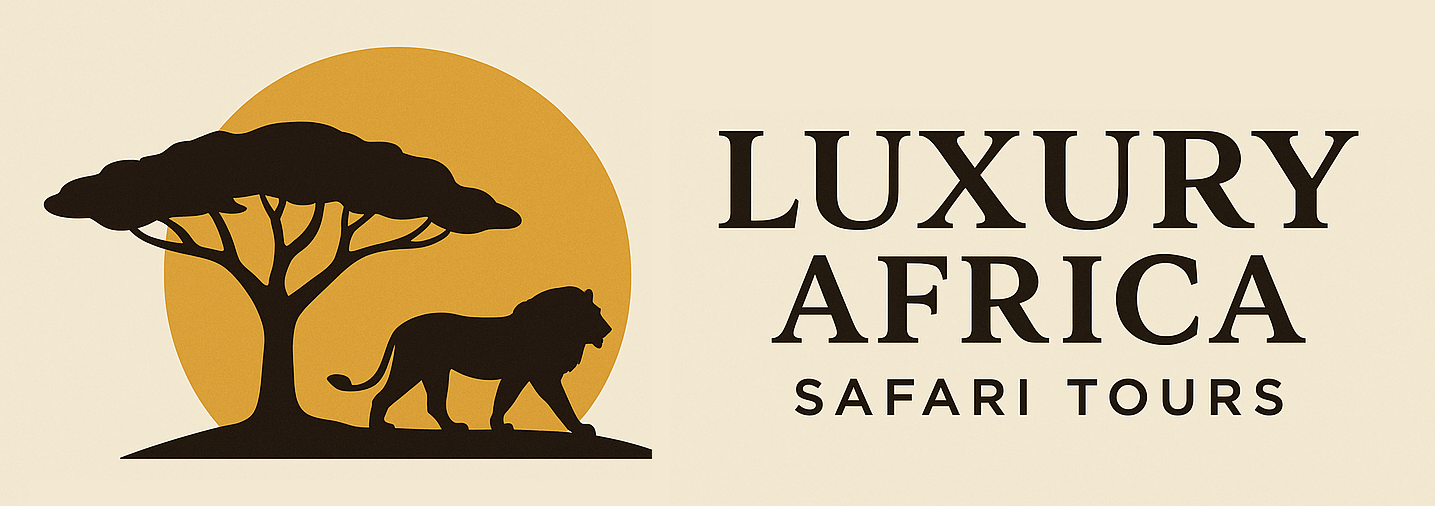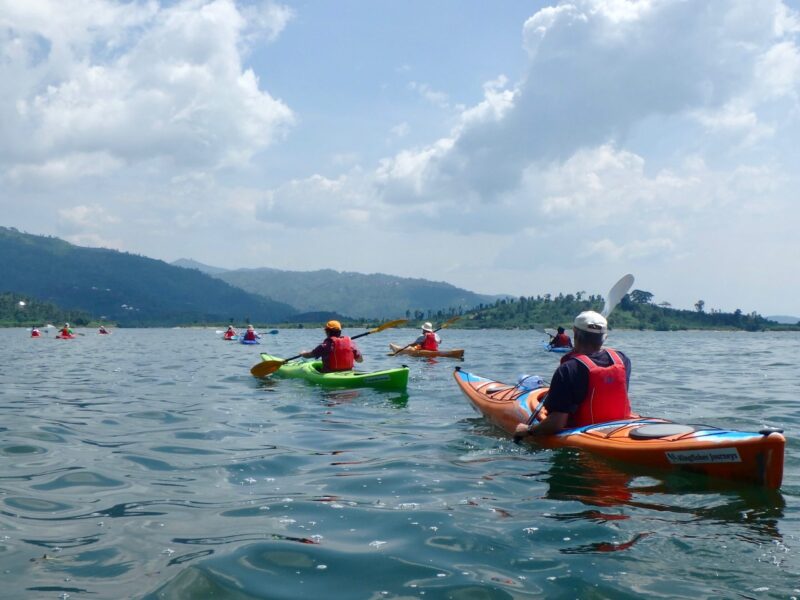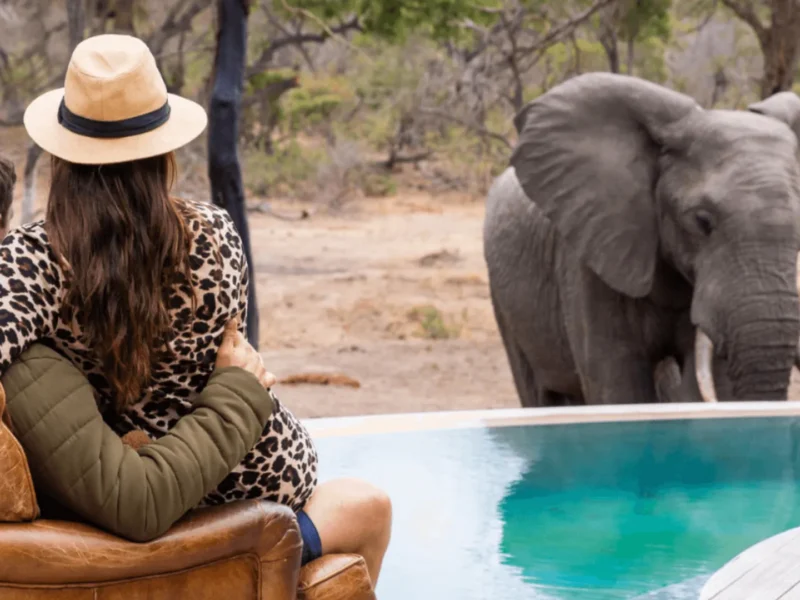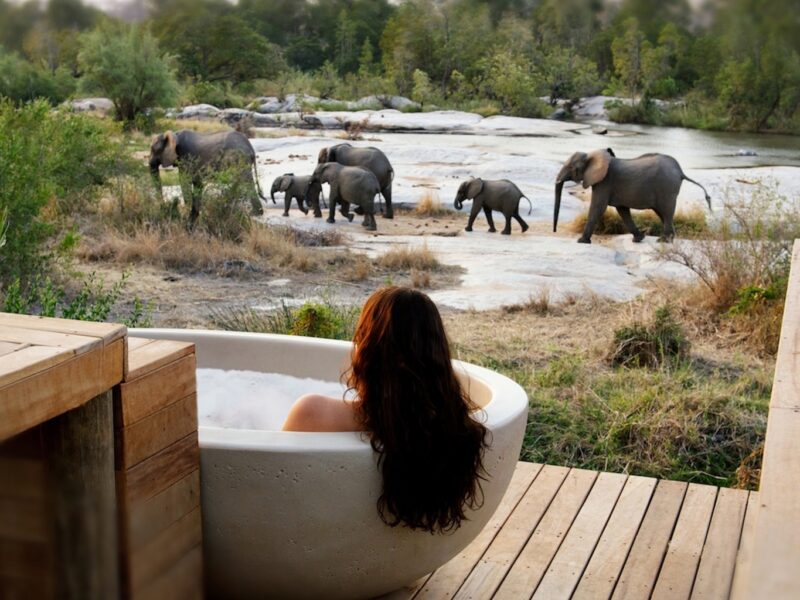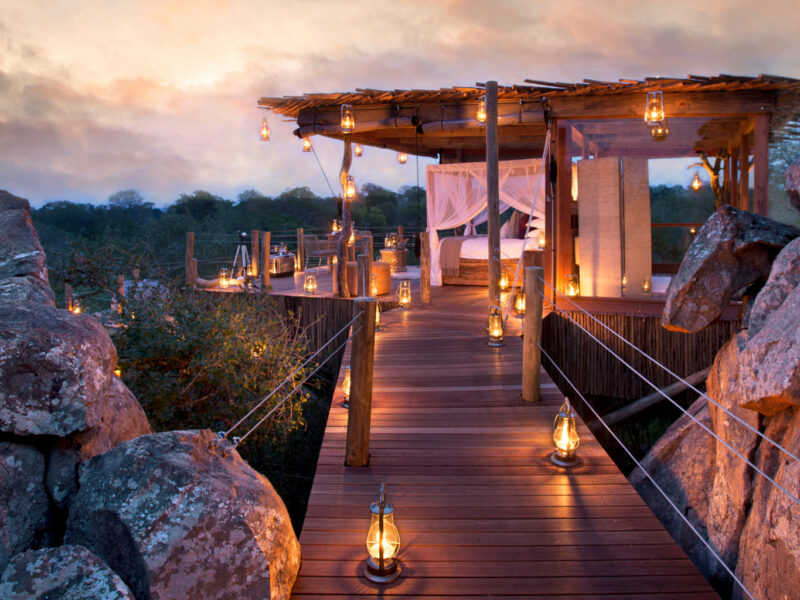Tarangire National Park
The less well-known, peaceful treasure on the northern safari circuit is Tarangire. It is a favourite among Tanzania’s guides because of a 3,000-strong migration of elephants that peaks between July and November.
Offering a somewhat different habitat than its more well-known neighbors at Ngorongoro and Serengeti, Tarangire’s habitat is far more like that of the southern Tanzania parks, particularly Ruaha. The most enticing feature of Tarangire is its sheer immensity and lack of visitors. Tarangire sees less tourists than Lake Manyara and dwarfs it! Those who do travel this far usually spend little time seeing the northern portions of the park before hurrying off elsewhere. This makes the south of the park somewhat isolated and free from visitors rather distant.
Can Tarangire show the five big ones?
Sadly, Tarangire lacks rhinos, hence it is not possible to see the Big Five here (rhino, elephant, buffalo, lion, leopard!). Still, Tarangire is among the most well-known locations in Africa where one may view elephants. At the height of the dry season, around 3,000 elephants fall into the Tarangire swamp system; it is a very amazing scene. Common also are Buffalo and lion; spotting leopard is difficult here. Although it is not assured, over a three-day stay we would hope you would be lucky enough to see leopard.
Tarangire’s general game
The most amazing aspect of Tarangire is definitely the elephant migration, in which massive herds pass throughout the marshes and river system during the dry season. This is a really amazing image given the extraordinary density of elephants in the area. Actually, Tarangire boasts the highest Elephant count in northern Tanzania! Tarangire is home to many species all year long, but they are not the only animals drawn in enormous numbers to the water sources of the park during the dry spell.
From June to October, Tarangire’s abundance of lion and leopard efficiently sets up camp near the Tarangire River from June to October to be near the wildlife gatherings. Not too rare also are tree-climbing lions! On the other hand, cheetahs are somewhat scarce. Though wild dog are rare and prefer other regions within the Maasai Steppe, other carnivores that prowl the rolling acacia and baobab trees, riverine forests and lush grass include hyena, jackal and wild dog.
The herbivores most responsible for the total count of species in Tarangire are Apart from the massive numbers of elephant, the park is overflowing with wildebeest, zebra, eland, impala, larger and smaller kudu, dik-dik, Coke’s hartebeest, Thomson’s gazelle, giraffe, buffalo, reedbuck, waterbuck, warthog, hippopotamus, mongoose and rock hyrax! Two somewhat odd antelope species are also the gerenuk and the fringe-eared oryx. Although black rhinos are extremely rare here, it is thought that a small number live in the more isolated parts of the park.
With over 500 species identified to date, Tarangire is a birdwatcher’s dream come true as birds abound in stunningly large numbers! Tarangire’s varied topography means that there is an amazing array of feathery companions to meet: ostriches, eagles, lovebirds, weavers, Barbets, parrots, pelicans, nightjars, starlings, babblers, and the quite interestingly titled bare-faced go-away bird. If birding is your thing, be sure to carry your binoculars.
When should one go to see games?
Like most parks in “Safari Africa,” Tarangire is a classic dry-season park with declining wildlife concentrations towards later in the year. The optimum time of year to travel is July through October when the large herds gather around the Tarangire river system. The herds travel south to the Maasai Steppe for the rest of the year; some animals travel in the reverse direction and have been noted as far north as Amboseli in Kenya! Travel here out of season; guests will find a park wonderfully empty of people and access it for the fantastic low-season rates. Tarangire will also be missing most of its game, though! Of course, resident game still exists and the park is still interesting in our view; nevertheless, when the herds go, game concentrations clearly diminish.
When should one visit for value?
As with many areas of Africa, the seasons right on the brink of peak season and low season itself are when the park offers the best value. We have always advised that travel around November 1st is a fantastic time of year. The lodges all decrease their rates on this date and assuming the rain has not yet set in you can get August/September game watching for low-season costs!
Activities in Tarangire
Standard game drives have traditionally been the major activity within the park; yet, during the past few years TANAPA (the National Park Authority) has added some activities that are the envy of other national Parks. Though each lodge has unique activities, most concentrate on standard wildlife drives. The northern park with most variety of safari activities is Tarangire, the only national park in Tanzania where it is feasible to perform night safari as well as walking and fly camping. The Northern Circuit’s secret jewel.
Our preferred Tarangire camps and lodges
Inside the park, there are barely a few decent campers in prime sites. Our picks include Kuro, Oliver’s, Swala, but we also enjoy Lemala and Mawe Ninga’s more daring approach.
Tarangire’s top advice
First of all, keep inside the park! Visiting the main gates of Tarangire at the start and finish of a game drive might become monotonous and requires you to leave the park earlier than usual.
Keep as far into the park as you can. Tarangire’s northern sections are known for heavy traffic and somewhat busy game-drive zones. There are only a few game-drive circuits in the northern Tarangire area, and during peak season these paths are quite widely used; we try to avoid them. Nestled off this northern region, Kuro, Swala, Oliver’s, Little Oliver’s, Balloon Camp Tarangire, and Nasikia Ndovu demand your attention.
You should not undervalue this park! Tarangire, sometimes known as the hidden gem of Tanzania’s Northern Circuit, is indeed a treat. Peak season parks including Lake Manyara and the Ngorongoro Crater are rather crowded. Still, Tarangire always exudes a genuine appeal absent from more crowded parks. If at all feasible, include it and spend at least two nights there.
If you are the type of client who enjoys straying from the path, there is a strong case that simply visiting Tarangire and the Serengeti is the correct course of action. Undoubtedly, these parks are where aficionados would claim “real safari can be found,” and skipping the Ngorongoro Crater and Lake Manyara is really a smart move!
Take great care while driving the Northern Circuit. The tendency to maximize as much as possible into an itinerary is one of the most frequent mistakes we find on client trips from other providers. For example, we have been asked to arrange a game drive in Tarangire on the route to Manyara; this is feasible but most definitely exhausting! It is most usually advised by inexperienced operators trying to cover the highlights.
We drive to Tarangire, but since the trip involves a lot of hours on the road, you have to plan very well. The crucial thing here is to drive up through the lower portion of Lake Manyara National Park instead of using the main route and ensure you know how much driving you are doing.
flies in Tsetse. Understand their nature. Prepare yourself. tsetse love Tarangire!
